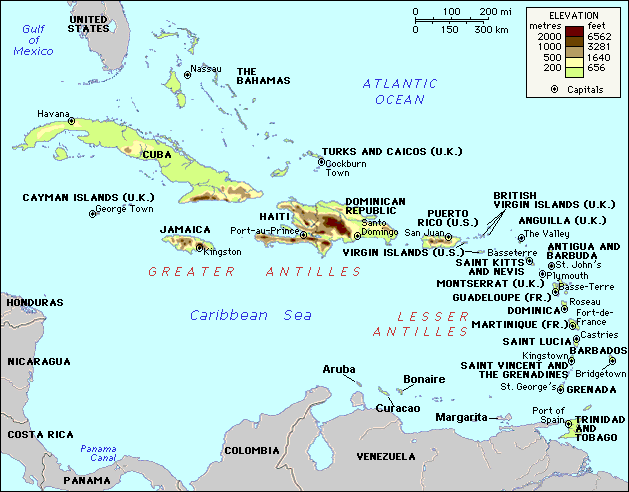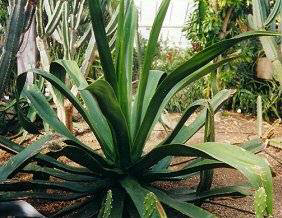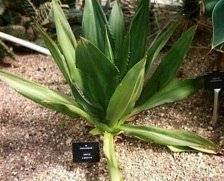



 ..
..



 ..
..Index of articles:
There currently appears to be great interest amongst agave afficionados in the plants growing outside the main continental American habitat. This is reflected in the increasing number of articles written about this subject and in the nature of correspondence between enthusiasts. It is the aim of this brief essay to summarise the situation at this time.
The original authoritative work on this subject was written in 1913 by William Trelease and titled simply 'Agaves in the West Indies'. Trelease was the successor to Engelmann at the Henry Shaw Botanical Gardens in St. Louis. He was the first major agave taxonomist to visit plants in habitat but he also based a lot of his work on herbarium specimens. His works were written between 1907 and 1920 making him a contemporary of Alwin Berger and there was known to be communication between them albeit interrupted for some years by the First World War. For example he was not aware of Berger's great work 'Die Agaven' , written in 1915 until about 1920. From his records it is possible to see that he travelled extensively throughout the Caribbean in 1907 and was in the region of Guatemala in 1915. Berger included species from these parts of the world in his monograph but made little change to Trelease's classifications. Gentry's work , first published in 1982, did not cover the Caribbean at all but did venture to South America. There have been several publications from Holland on this subject from P. Wagenaar Hummelinck between 1936 and 1993. R.A. Howard reviewed several of the Caribaeae group in ' Flora of the Lesser Antilles' ( vol. 3;1979 ) and also there was a work by D.O.Wijnands in 1983 called ' The botany of the Commelins' in which he argued that Agave angustifolia should be renamed Agave vivipara throughout its habitat both in continental America and the islands. This particular argument has been further substatiated in papers by P.Foster in 1992 and by G. Smith and E.Steyn in 1999. In 2003 Garcia-Mendoza and Chiang produced a paper in which they showed that angustifolia and vivipara are different taxa and should not be considered as the same plant.
Trelease had written that angustifolia was one of three forms of agave which had probably been introduced at some stage in the 19th century to the various islands, the others being fourcroydes ( now considered as a cultivar derived from wild angustifolia populations by Colunga-Garcia Marin writing in several papers between 1996 and1998 ) and sisalana. This was in connection with the developing trade in fibre production.
All of the agaves of this region belong to the subgenus agave.
Agave antillarum at Oviedo, Dominican Republic ( picture by Carlo Morici )


Agave harrisii Agave cocui

Agave karratto Agave antillarum